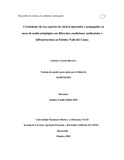Please use this identifier to cite or link to this item:
https://repository.unad.edu.co/handle/10596/34349Full metadata record
| DC Field | Value | Language |
|---|---|---|
| dc.contributor.advisor | Pulido, Sandra Yamile | - |
| dc.coverage.spatial | cead_-_palmira | spa |
| dc.creator | Acosta Herrera, Gustavo | - |
| dc.date.accessioned | 2020-05-31T01:28:53Z | - |
| dc.date.available | 2020-05-31T01:28:53Z | - |
| dc.date.created | 2020-05-25 | - |
| dc.identifier.uri | https://repository.unad.edu.co/handle/10596/34349 | - |
| dc.description.abstract | La citricultura colombiana se encuentra representada en la producción de naranjas, limones y mandarinas, en el ámbito nacional predomina la naranja Frost valencia sobre todo en la zona central cafetera, la lima ácida Tahití ofrece una buena perspectiva para su producción con destino a mercados internacionales y la mandarina Oneco es en estos momentos la de mayor área sembrada. La creciente problemática sanitaria a nivel nacional sobre el sector citrícola requiere que la producción de todo el material a nivel de vivero se realice en el interior de casas de malla antipulgón, condición que asegura la inocuidad del material producido y su longevidad en el tiempo. En Colombia no se tienen resultados de investigaciones referentes al desarrollo de materiales de cítricos en ambientes protegidos. La presente evaluación fue desarrollada en cuatro diferentes ambientes protegidos ubicados en Agrosavia C.I Palmira, los resultados obtenidos a partir del seguimiento de variables de crecimiento de los tres materiales comerciales sobre el portainjerto Sunki x English y su interacción con las condiciones climáticas de cada ambiente nos permitieron concluir que las condiciones ambientales influyen en el desarrollo de los cultivares evaluados. Palabras clave: ambientes protegidos, citricultura colombiana | spa |
| dc.format | ||
| dc.title | Crecimiento de tres especies de cítricos injertados y propagados en casas de malla antipulgón con diferentes condiciones ambientales e infraestructura en Palmira Valle del Cauca. | |
| dc.type | Proyecto aplicado | |
| dc.subject.keywords | Producción, Fruta, Clima, Cultivo | spa |
| dc.description.abstractenglish | The Colombian citrus industry is represented in the production of oranges, lemons and tangerines, at the national level the Frost Valencia orange predominates especially in the central coffee zone, the Tahiti acid lime offers a good perspective for its production destined for international markets and The Oneco tangerine is currently the largest planted area. The growing national health problem on the citrus sector requires that the production of all the material at the nursery level be carried out inside the houses of antipulgón mesh, a condition that ensures the safety of the material produced and its longevity over time. In Colombia there are no results of research regarding the development of citrus materials in protected environments. This evaluation was carried out in four different protected environments located in Agrosavia CI Palmira, the results obtained from the monitoring of growth variables of the three commercial materials on the Sunki x English rootstock and its interaction with the climatic conditions of each environment allowed us To conclude that the environmental conditions in which citrus cultivars develop influence the development of the evaluated cultivars. Keywords: protected environments, Colombian citrus farming | spa |
| dc.subject.category | Agronomía | spa |
| Appears in Collections: | Agronomía | |
Files in This Item:
| File | Description | Size | Format | |
|---|---|---|---|---|
| gacostah.pdf | 892.7 kB | Adobe PDF |  View/Open |
Items in DSpace are protected by copyright, with all rights reserved, unless otherwise indicated.
